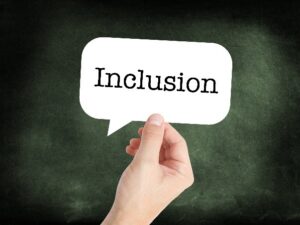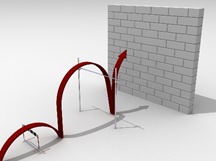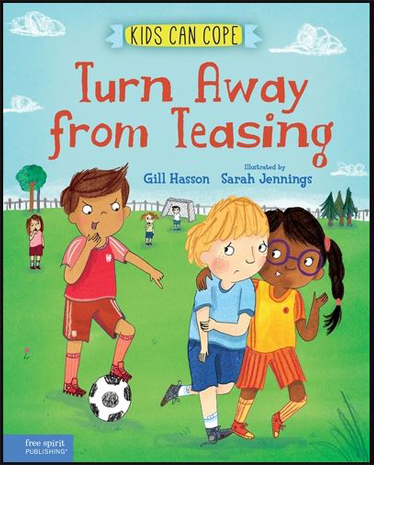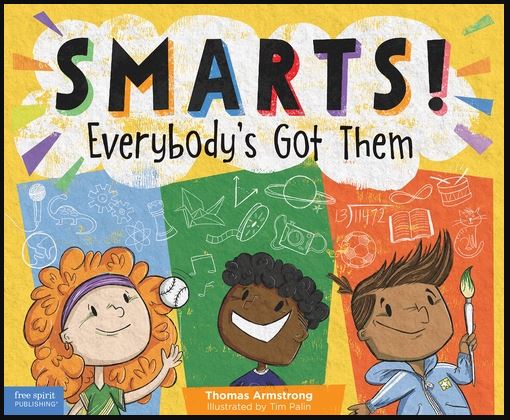Related Products
For Parents
Related Teacher Tools Takeout Items
Inclusion – Factors that Make it or Break it
 Every parent and teacher want children with hearing loss to be successful in the classroom, both academically and socially. There are benefits to including students with disabilities in their neighborhood schools and having them be fully included in mainstream settings. Yet, students with hearing loss have unique needs that are often overlooked or minimized due to the low incidence nature of this learning challenge. The purpose of this article is to examine the factors that result in successful inclusion and those that are barriers to success.
Every parent and teacher want children with hearing loss to be successful in the classroom, both academically and socially. There are benefits to including students with disabilities in their neighborhood schools and having them be fully included in mainstream settings. Yet, students with hearing loss have unique needs that are often overlooked or minimized due to the low incidence nature of this learning challenge. The purpose of this article is to examine the factors that result in successful inclusion and those that are barriers to success.
 A research study from 20061 delved into the ingredientsfor success for students with hearing loss. While the article focused on students who were orally educated, many of the factors also apply to students who are visual communicators in the inclusive education environment.
A research study from 20061 delved into the ingredientsfor success for students with hearing loss. While the article focused on students who were orally educated, many of the factors also apply to students who are visual communicators in the inclusive education environment.
The findings resulted from a series of focus groups with young people with hearing loss, their parents, and itinerant teachers of the deaf and hard of hearing. The findings support that successful inclusion requires a commitment from various sources and respectful partnerships among the school team, including parents.
Low Incidence, but More Children than You May Think – Increasing numbers of infants with hearing loss continue to be early identified within the United States, however the most recent data (2016) indicates that, of more than 65,000 infants failing newborn hearing screening, over 16,500 (25%) were lost to follow up and did not go through the diagnostic process. Approximately 10% of babies failing hearing screen are identified with hearing loss. Thus, it can be surmised that more than a thousand babies who were lost to follow up each year will enter school with hearing loss without the benefit of early intervention. Of the 2016 babies identified with hearing loss for whom early intervention data was reported, almost 20% never received early intervention services. While early hearing loss detection and intervention (EHDI) in the US has been a huge success in the last 20 years, it is clear that we continue to have a significant proportion of children with congenital hearing loss who are unidentified, and/or receive no timely intervention despite failing newborn hearing screening. Add to this number the children with progressive or otherwise acquired hearing loss who passed newborn hearing screening. These children too are likely to have gone without timely early intervention resulting in a developmental impact that is a educational crisis. It has been reported that approximately 7% of children in school have some degree of unilateral or bilateral hearing loss, or 25 times as many children in school with hearing loss as there are at birth.
Educational Impact – Due to this and other factors, children with hearing loss can often have significant language delay (i.e., more than 6 months), resulting in their difficulty not only catching up in their areas of delay, but also keeping pace in the inclusive classroom for which significant communication access barriers are an everyday reality. The goal of an appropriate educational placement is to match the needs of the student to the continuum of services available in a school or school district. The strong move to full inclusion within the US has reduced the number of day school, center-based and resource room settings specific to students with hearing loss, creating a landscape that increasingly looks ‘one-size-fits-all’ – the inclusive setting.
It is critical for parents, school teams, and especially specialists in the education of children with hearing loss to fully understand what is required for these children to succeed in their neighborhood schools. Inclusion focuses on acceptance rather than exclusion of children with disabilities in the classroom, school and community. It is being accepted as having overall beneficial effects. For more information on inclusion benefits and the specific serious considerations for students with hearing loss refer to the October 2017 Supporting Success Update article, Is the Inclusion Model Good for Students with Hearing Loss?
Predictors of Successful Inclusion
These predictors have often focused on the indiv idual characteristics of the students themselves. It has been common to place pressure on the students themselves, holding them primarily responsible for their own success or failure within the mainstream. The characteristics include:
idual characteristics of the students themselves. It has been common to place pressure on the students themselves, holding them primarily responsible for their own success or failure within the mainstream. The characteristics include:
- Early identification of hearing loss
- Early and consistent use of amplification (in the case of visual learners it would be early and consistent use of fluent, vocabulary rich ASL skills or other form of visual communication)
- Early family-oriented infant and preschool programming
- High level of parental involvement in early childhood
- Knowledgeable development of auditory and spoken language skills (in the case of visual learners, knowledgeable development of visual communication skills)
- Early placement into regular school (between age 3-6) with support services as required
- Reading/writing ability commensurate with peers
- High levels of speech intelligibility
- Good organizational skills
- Proactive, determined to succeed and enthusiastic about learning
- Taking responsibility for their own educational success by keeping up with homework, planning/reading ahead, and requesting help as necessary
- Advocating for their own needs including active problem-solving skills to address their communication and learning challenges
- Being outgoing, having a good sense of humor, and being open to discussing and explaining the hearing loss to others
 What is success?
What is success?
There are a variety of ways in which ‘success’ has been defined, including:
- Academic achievement
- Receptive/expressive language
- Performance on standardized measures of learning
These elements do not ensure that a student will be able to make a successful adjustment to adult living. Success in inclusive settings needs to be defined in terms of social development, along with communication and academic achievement.
Elements necessary for success include:
- the need for detailed planning and close examination of educational alternatives based on the abilities and needs of the individual child prior to classroom placement
- in-depth in-service training for teachers and other professionals
- ongoing support of students and teachers in facilitating inclusion and
- the importance of psycho-social considerations in planning for successful educational placements
Barriers to Success
- Classroom teachers who lack information, preparation, and/or interest in understanding the effects of hearing loss on communication development and academic performance
- Teachers unwilling to invest the additional time and effort required to teach the student effectively
- Teachers who have negative attitudes toward inclusion generally or towards integrating students with hearing loss in particular
- Teachers who are unwilling to maintain communication with parents or solicit their involvement
- Underestimating the potential abilities of students with hearing loss; having reduced expectations with respect to learning or so
 cial behavior
cial behavior - Drawing excessive attention to the student’s hearing loss
- Teacher unwillingness to use assistive technology and learn adapted teaching strategies in order to make information more accessible to students with hearing loss
- Itinerant teachers who
- are inflexible in scheduling individual sessions according to the student’s class schedule
- set limits for the student, such as opposing enrollment in foreign language or music classes
- spotlight the student with hearing loss by drawing excessive attention to their hearing challenges
- Peer barriers
- Were perceived as acting either as barriers to the inclusion of the student, lacking in sensitivity to hearing loss and the needs of these peers including overemphasizing the hearing loss and making the students feel conspicuous
- Having new peer groups frequently throughout their school career, resulting in the need to constantly disclose the hearing loss and deal with peer reactions, questions, comments
- Resentment towards the child with hearing loss due to perceived favoritism or reduced classroom demands
- Peers who tease the students or intentionally exclude them from social activities during school, especially in later elementary years through high school
- Administrative barriers
- Lack of openness to a team approach to inclusion, including parents as partners
- Lack of consistency in services provided
- Placement in classrooms with large student-teacher ratios
- Lack of budgetary consideration for the purchase of assistive hearing/communication technology and acoustic modifications
- Lack of commitment to funding resource support services for both teachers and students
- Parent barriers
- Unfamiliarity with the educational system
- Lack of advocacy skills or unwillingness/inability to take the time needed to advocate with the school and/or work with their children at home
- Abdicating responsibility for the child’s learning once they enter school, rather than maintaining an ongoing involvement in their child’s educational progress
- Additional barriers posed by the student with hearing loss
- Being shy and lacking assertiveness, which reinforces unwillingness to participate socially and academically
Facilitators to Success
- The role of the itinerant teacher was the most frequent and important facilitator to inclusion mentioned across all groups (teachers, parents, students)
- Developing individualized programs to promote language, social and academic skills
- Sensitizing classroom teachers and peers to issues related to hearing loss and use of classroom hearing/communication technology
- Consulting regularly with classroom teachers
- Coordinating school-based services and programs
- Encouraging families as well as the students to take responsibility for the proper functioning of hearing aid technology
- Supporting skill development and situations that promote student independence
- Respecting student opinions related to selection of elective classes and having input into use of assistive technology in class
- Cooperative Principals who support the roles of support professionals

- Support role of the itinerant teacher
- Support and encourage the classroom teacher’s efforts to facilitate the student’s effective learning
- Support budgetary considerations to promote success of students with hearing loss
- Promoting a team approach to case management that emphasizes the inclusion of parents
- Provision for the continuity of services from support professionals over several years
- Establishing an atmosphere of acceptance within the school
- Developing a strong volunteer network in the school
- Sensitivity to the need for a reduced teacher-student ratio in the classroom
- Classroom teachers who have positive attitudes toward the concept of inclusion
- Flexibility toward assignments and testing
- Open to suggestions by the itinerant teachers
- Open to use of classroom hearing/communication technology
- Facilitative teaching strategies (i.e., facing the class while teaching, writing notes and assignments on the board, providing class notes, speaking at a slightly slower rate, facilitating the use of buddies and notetakers in class, providing hands-on opportunities for learning)
- Communicating regularly with parents
- Sensitive to the needs of students with hearing loss
- Attitude wherein they “feel like they can make a difference” in the education of the child with hearing loss
- Individual attention
- Classroom hearing/communication technology used consistently and appropriately
- Technology is readily accessible to teachers/student
- Technology is up-to-date

- Technology is maintained in good working order
- Technology is not forced upon the student
- Peers who
- are perceived as acting as facilitators to the inclusion of the student, with sensitivity to hearing loss and the needs of these peers without making them feel conspicuous
- are willing to act in the role as notetaker
- are willing to act as communication, academic, and social interpreters for students with hearing loss
- attend the same school and classes with the student over time, establishing long-term relationships with a body of peers who know the student, his needs, and accept the student for who he is
- Parents who have an assertive attitude and actively advocate to obtain essential services for their children in a school setting
- Become aware of educational policies/procedures relating to placement and evaluation of progress
- Membership on local school board or parent committees
- Attending program review committees
- Building a positive relationship with the itinerant and classroom teachers and administrators
- Helping with homework, follow up on topics and concepts discussed in class, and ongoing intensive work on the language (and speech) development of their children
Students with Hearing Loss who are English Language Learners
A recent article2 on students with hearing loss who are English language learners (DHH EL) identified the lack of appropriate assessments and resources specifically designed for students who are DHH EL. Service providers must adapt resources from other sources or develop their own resources to meet the needs of these students. The article states that collaboration between the general education teacher, EL teachers, and special education teachers should focus on a) identifying specific content and/or skills that can be taught or reinforced by EL teachers and/or special education teachers; b) ensuring that instruction in these concepts and/or skills will be consistent across teachers and programs, and c) preventing gaps, redundancies, and/or conflicts in instruction.
Summary
Full inclusion of students with hearing loss is becoming more common. It is important for specialists in the education of students with hearing loss to recognize the internal and external factors that facilitate student success in these settings, and also the barriers to this success. Successful inclusion requires commitment from numerous sources. The provision of adequate support  systems of students, teachers, and parents is an essential component of inclusion. It is facilitated when there is a partnership between knowledgeable families, professionals and children. Students with hearing loss themselves cannot be held solely responsible for the success or failure of their integrated experiences. The majority of barriers to successful inclusion are associated with the lack of knowledge, negative attitudes, and insensitivity of other key players in the inclusion process.
systems of students, teachers, and parents is an essential component of inclusion. It is facilitated when there is a partnership between knowledgeable families, professionals and children. Students with hearing loss themselves cannot be held solely responsible for the success or failure of their integrated experiences. The majority of barriers to successful inclusion are associated with the lack of knowledge, negative attitudes, and insensitivity of other key players in the inclusion process.
References
- Eriks-Brophy, A., Durieux-Smith, A., Olds, J., Fitzpatrick, E., Duquett, C., and Whittingham, J. (2006). Facilitators and Barriers to the Inclusion of Orally Educated Children and Youth with Hearing Loss in Schools: Promoting Partnerships to Support Inclusion. The Volta Review, 106(1), 53-88.
Becker, S.J. & Bowen, S.K. (2018). Service Providers’ Perspective on the Education of Students Who are Deaf or Hard of Hearing and English Learners. American Annals of the Deaf, 163(3), 356-373



